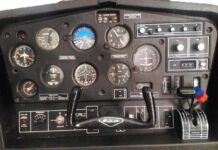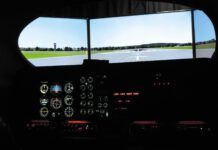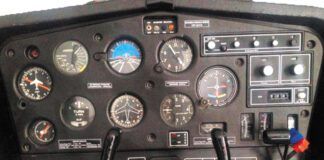My home recently came under the attack of two adopted, seven-month-old kittens. Watch these pint-sized entropy enhancers for five minutes and you’ll know why they say cats have nine lives. Climbing the curtains sure seemed like a good idea at the time. Now hanging in space by 10 front claws and slipping, diverting to a Plan B might be in order. Then superior engineering borne of millennia of evolution kicks in, and dropping 15 times their own height ends with a perfect landing and a surprise attack on the lamp cord.
Listening to the somber audio of a recent Cirrus crash in Melborne, Fla., (snipurl.com/22txmze), I find myself wishing it were so easy for pilots. The results aren’t official, but it looks like the pilot confused a clearance to follow a preceding aircraft and land with a clearance to just land. He made a close-in base, ATC realized it might be a conflict and told him to “cut it tight, now,” he did—and the airplane apparently spun in short of the runway. All three aboard died.
Donning my Monday-morning helmet, I see two factors conspiring. One is technology: A recent Air Safety Institute report says the number of fatal, stall-related accidents in Cirrus and Columbia (Corvallis) aircraft are three times that of legacy models. “The disparity is too wide to be plausibly attributed to chance (p < .01). Relative to estimated time in service, their rate of fatal stall accidents is almost five times as high."
The apparent oddity here is that neither airplane has particularly nasty stall behavior. But I don’t think that’s the core issue. The Cirrus and Columbia are built for speed. The tradeoff is they don’t have a great buffer between approach speed and stall speed. They haul more weight, so there’s a greater disparity between stall speeds empty and loaded. A faster approach speed also means a wider turn radius on that turn to final, meaning a greater impetus to pull a bit harder—what seemed reasonable at the start of the turn ends badly.
What technology wrought, it could also mitigate. From the same report: “Direct display of angle of attack, perhaps augmented by a series of audible and visual warnings as it nears its critical value, would be an important safety improvement.”
True, but it would have to warn far enough in advance of disaster that the pilot would still be able to save the day. This touches the other, more difficult factor. Tell a pilot in a high-performance aircraft to “cut it tight” while he’s still on the downwind and he’ll reconfigure, slow down, and expect the short approach … or say, “Unable,” from the comfort of distance and 10 seconds to think it through. Tell him on close-in base and he has to have the wherewithal to do say, “No,” while simultaneously going around, possibly over the parallel runway and be willing to accept the consequences. That’s hard to do for any human in any airplane, high tech or not.
The best might be a smart system that yells, “Level the wings!” when it sees both high g-loading and an increasing, but not yet critical, angle of attack. That might overcome the inertia of committed action or compliance with ATC.
I have sympathy for the argument that flight in high-tech aircraft shouldn’t necessitate high-tech aids. But as we squeeze out more and more performance, something must give—and it won’t be the human at the controls.
We don’t have millennia to evolve eight more lives. —Jeff Van West




